Longlining surveys signal Bahía de la Ascensión as a safe haven for sharks and rays
The time finally came for us to go out to one of our two field study-sites and see what species of sharks and rays we could find living there, and if newborn and early juveniles could be found. It was also the final test for our longline gear and our team’s ability to handle the setting and retrieving of the longlines, something easy to say but which can get complicated by the type of vessel and especially by weather conditions.
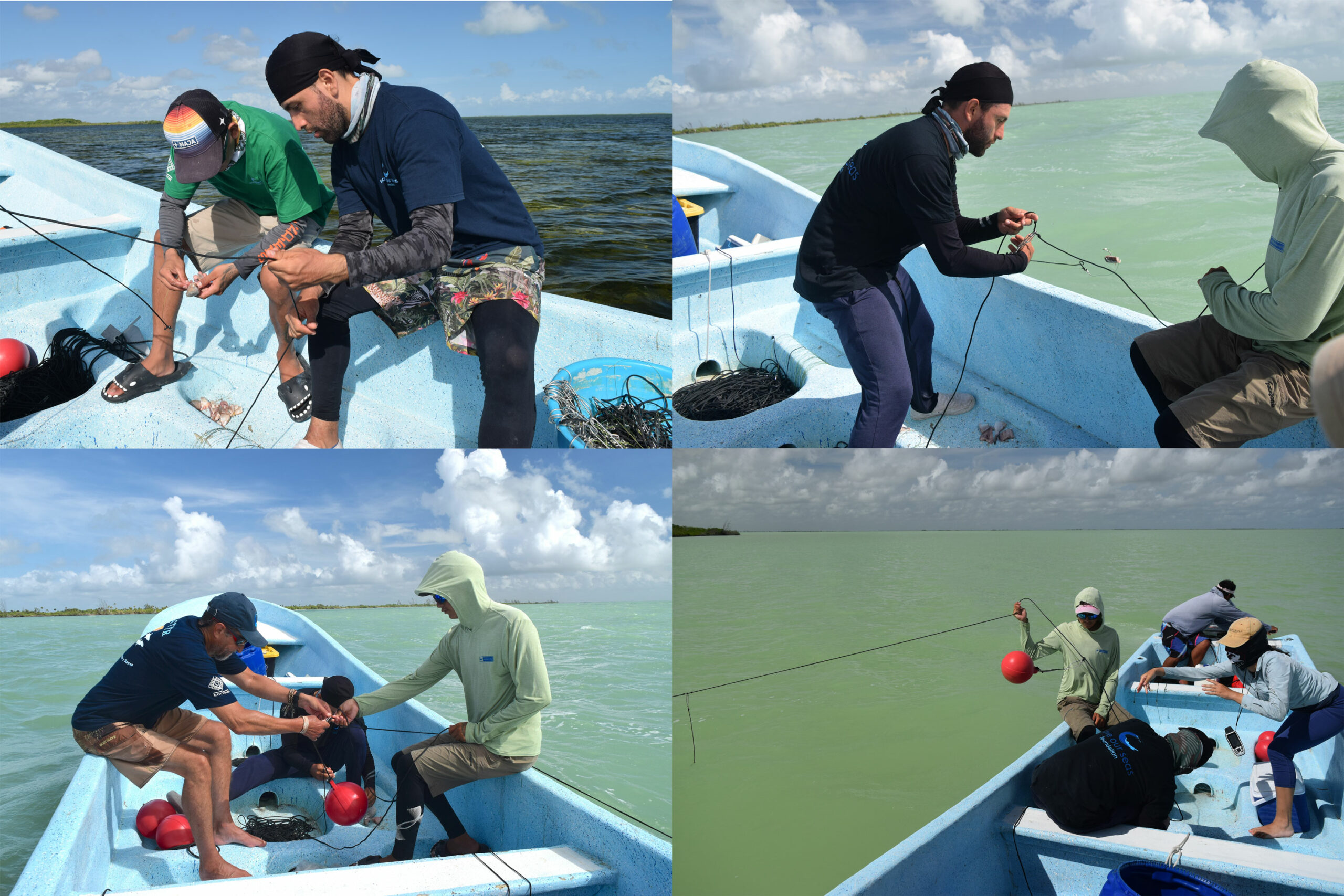
(Top left) Andrés and Samuel bait the hooks of the longline (Photo © Ramón Bonfil), (Top right) The longline is set in the shallow waters of Bahía de la Ascensión hook by hook (Photo © Ramón Bonfil), (Bottom left) A buoy is set every 10 hooks (photo © Mara Espinoza), (Bottom right) Mara helps snap the buoys to the mainline (Photo © Ramón Bonfil)
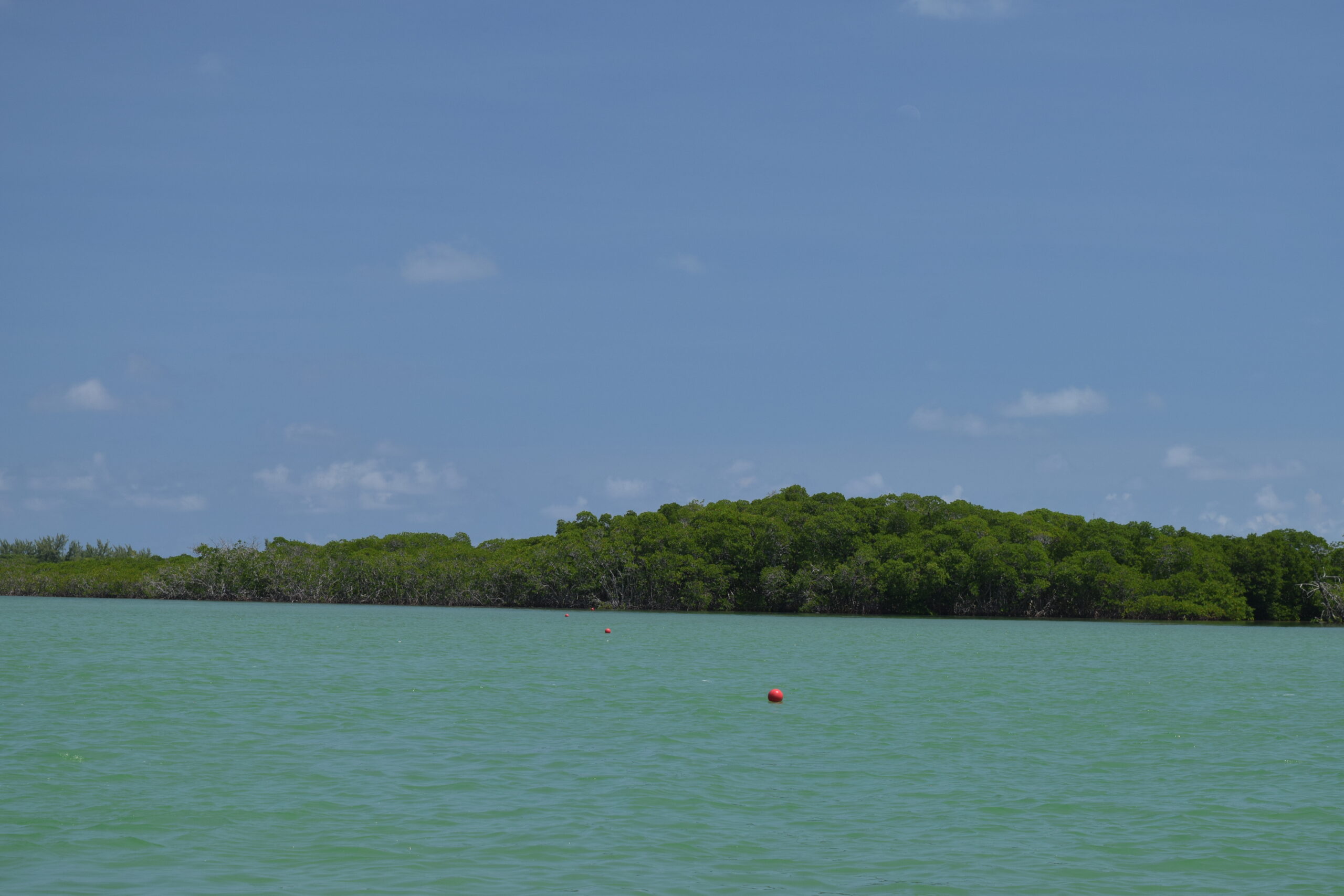
The longline is set close to the shore looking for newborn and juvenile elasmobranchs seeking refuge nearshore. Photo © Ramón Bonfil
Fortunately for us, we had a great captain and crew: Manuel “Tarántula” Perez and his skillful son Samuel. They are local fishers with a great knowledge of the area and a lot of first-hand experience with fishing gear. So, Andrés, my doctoral student who is in charge of the longline surveys here, learned the ropes very fast, and soon, with the help of my MSc student Mara, and occasionally me, he was able to master all the aspects of setting and retrieving the longline as well as the handling our shark and ray catch.
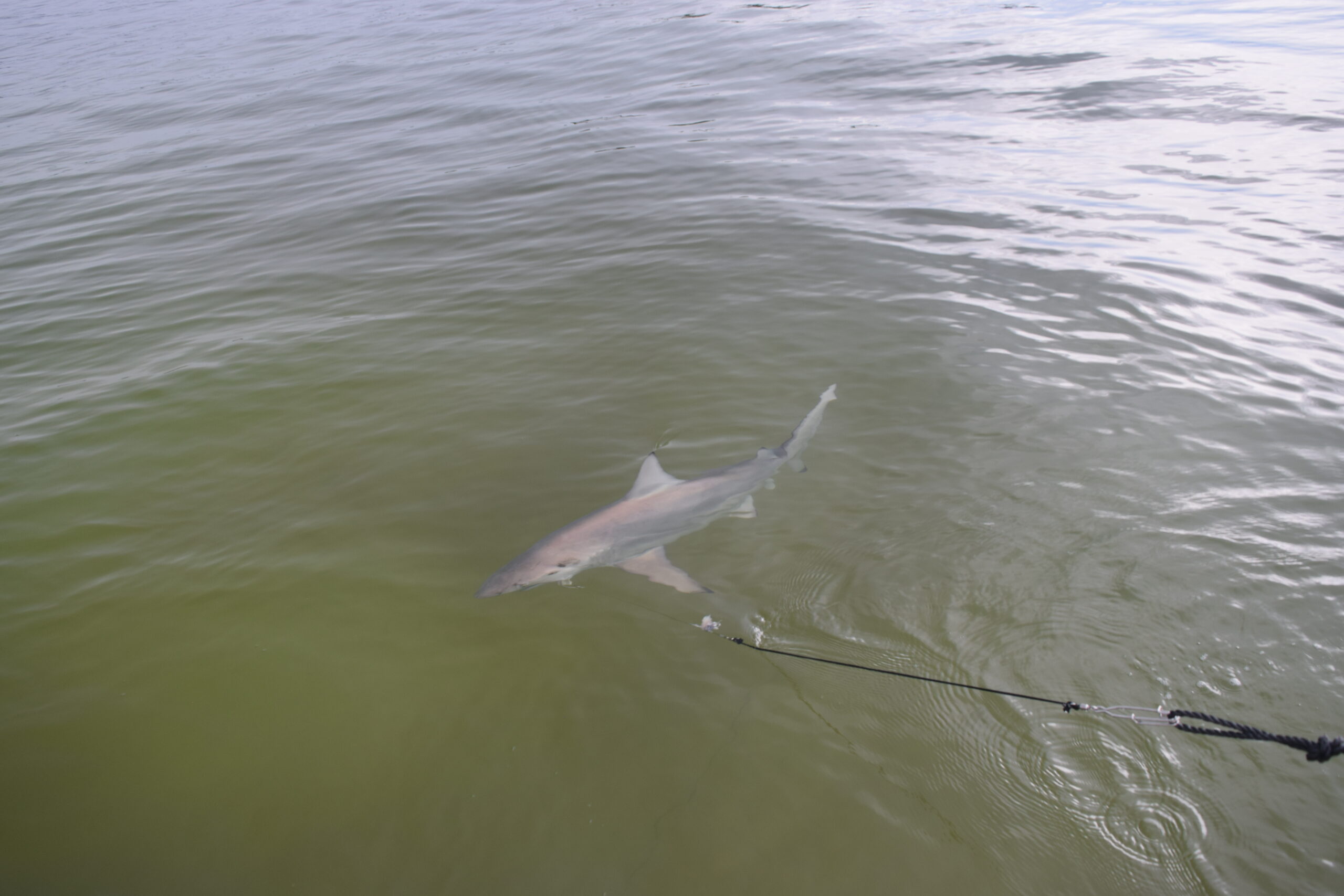
Our first catch! A young-of-the-year blacktip shark (Carcharhinus limbatus)! Photo © Mara Espinoza
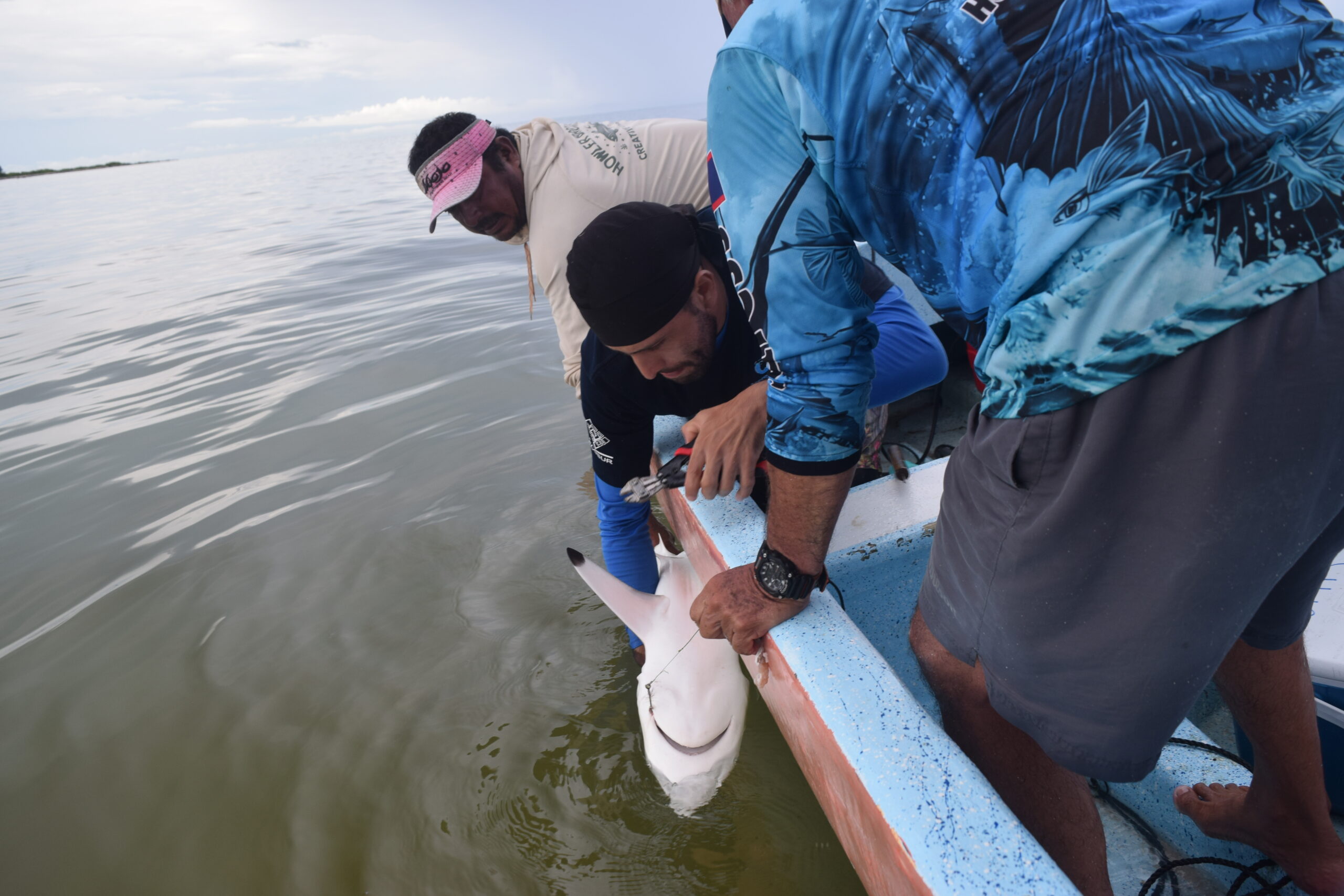
Juvenile sharks are carefully handled either next to the boat or on deck, depending on their size. Photo © Mara Espinoza
During the two weeks we spent in Bahía de la Ascensión, we set a total of 36 longlines around the bay and other areas adjacent to the bay, and although the weather didn’t always cooperate (we were there in September, right in the middle of the hurricane season), we had a great sampling campaign. The first few days we caught a few shark juveniles and fewer adult rays, but as the days passed, we started to hit the jackpot in several specific areas of our study-site and find a good number of small sharks.
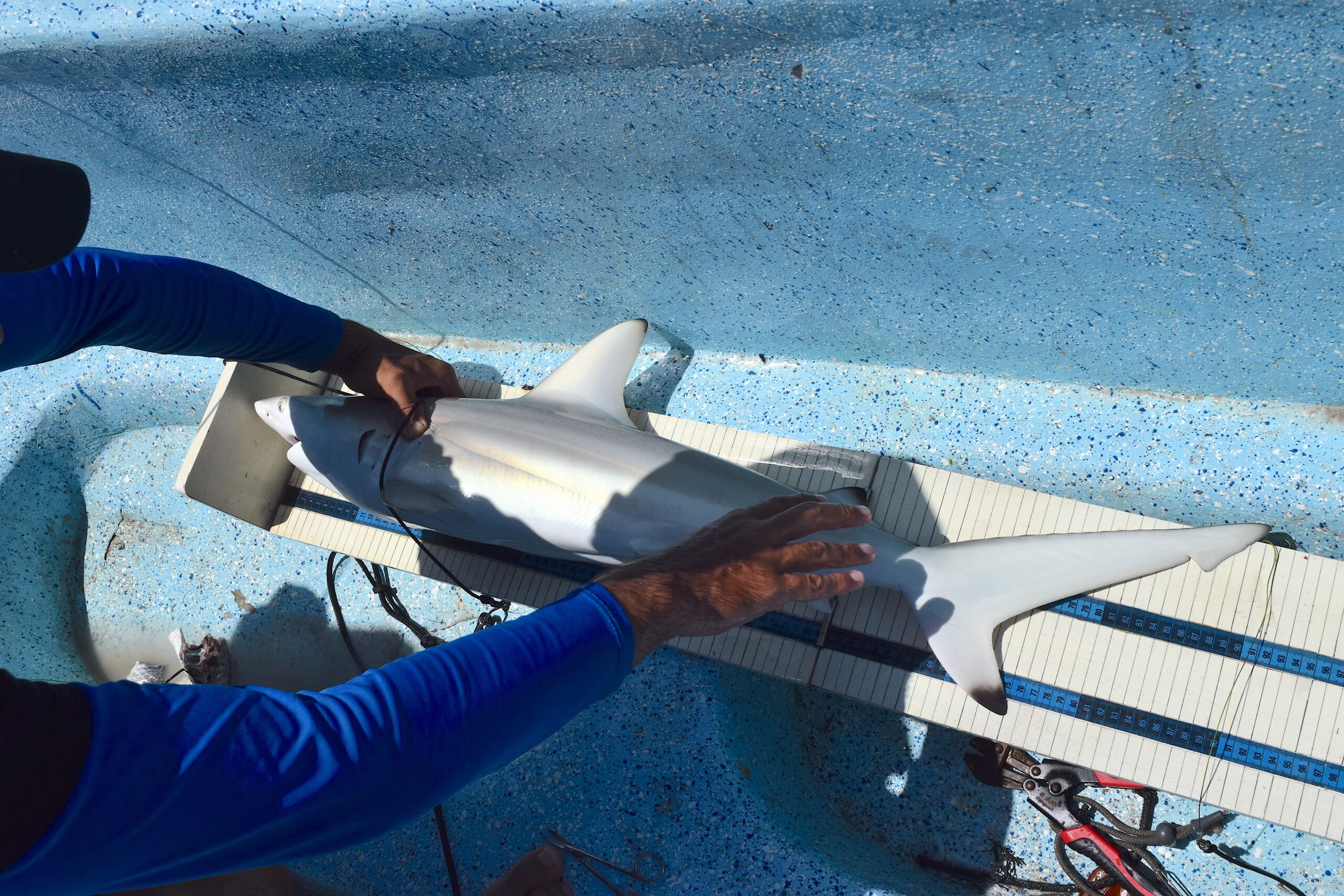
All organisms are carefully measured with an ichthyometer. Photo © Mara Espinoza
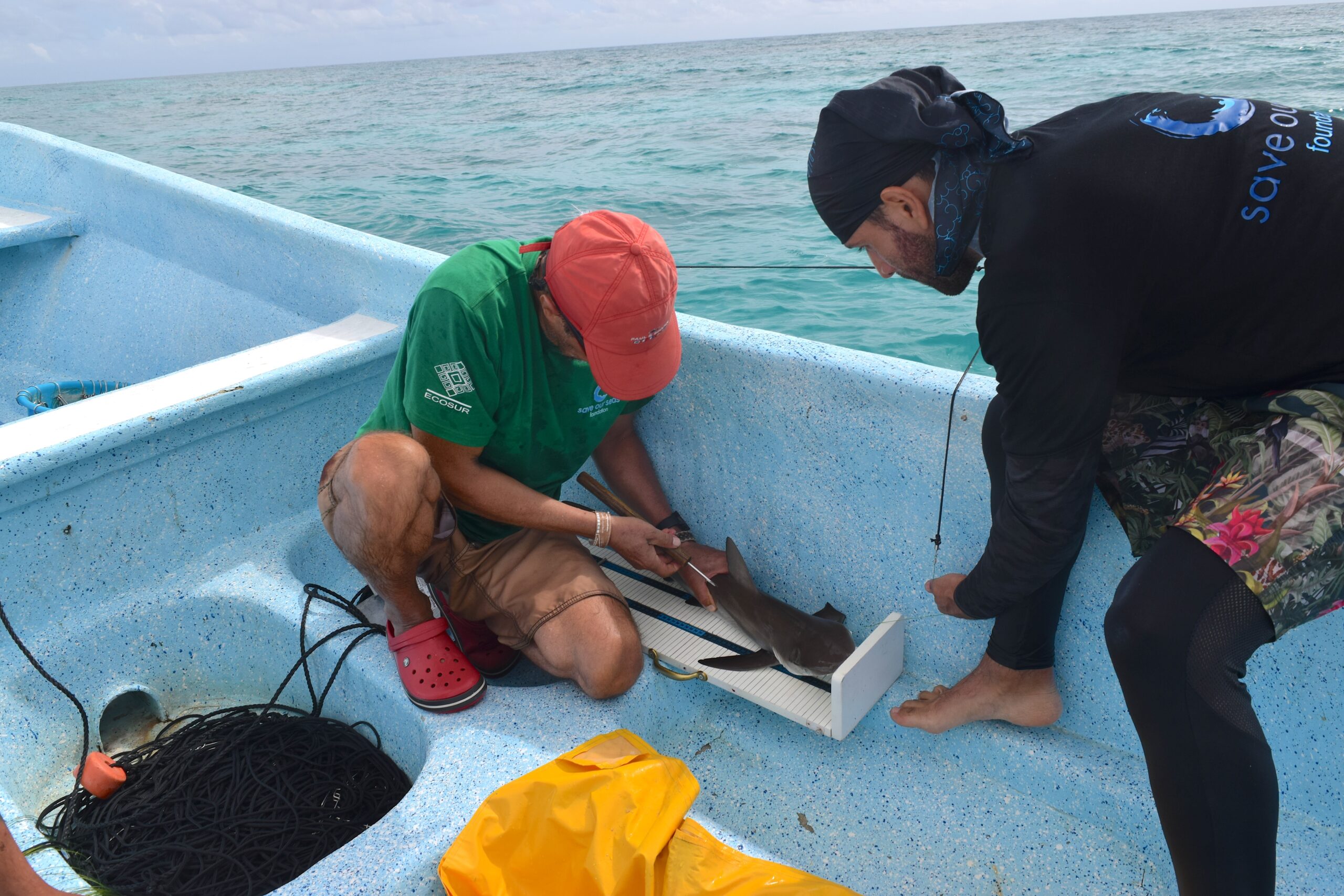
A newborn lemon shark (Negaprion brevirostris) being tagged with a spaghetti tag. Photo © Mara Espinoza
Our excitement grew with every new species we caught, the ubiquitous nurse sharks were the first species to be caught along with Caribbean reef shark (which were a relative surprise to us since our previous LEK surveys had not put them into our radar), then lemon sharks in good numbers along with Atlantic sharp-nose sharks (or are they Caribbean sharp-nose?! We still have to find out…). We were very excited to find blacktip sharks in abundance, since we were told by fishers we should find a lot of them. However, the highlight of the fieldtrip was when we caught our first and only juvenile bull shark, and then a juvenile tiger shark! A few Atlantic chupares and fewer southern stingrays completed the list of elasmobranch species and added a bit of diversity to our work. In total, we caught 104 sharks and rays, which was pretty good for our expectations.
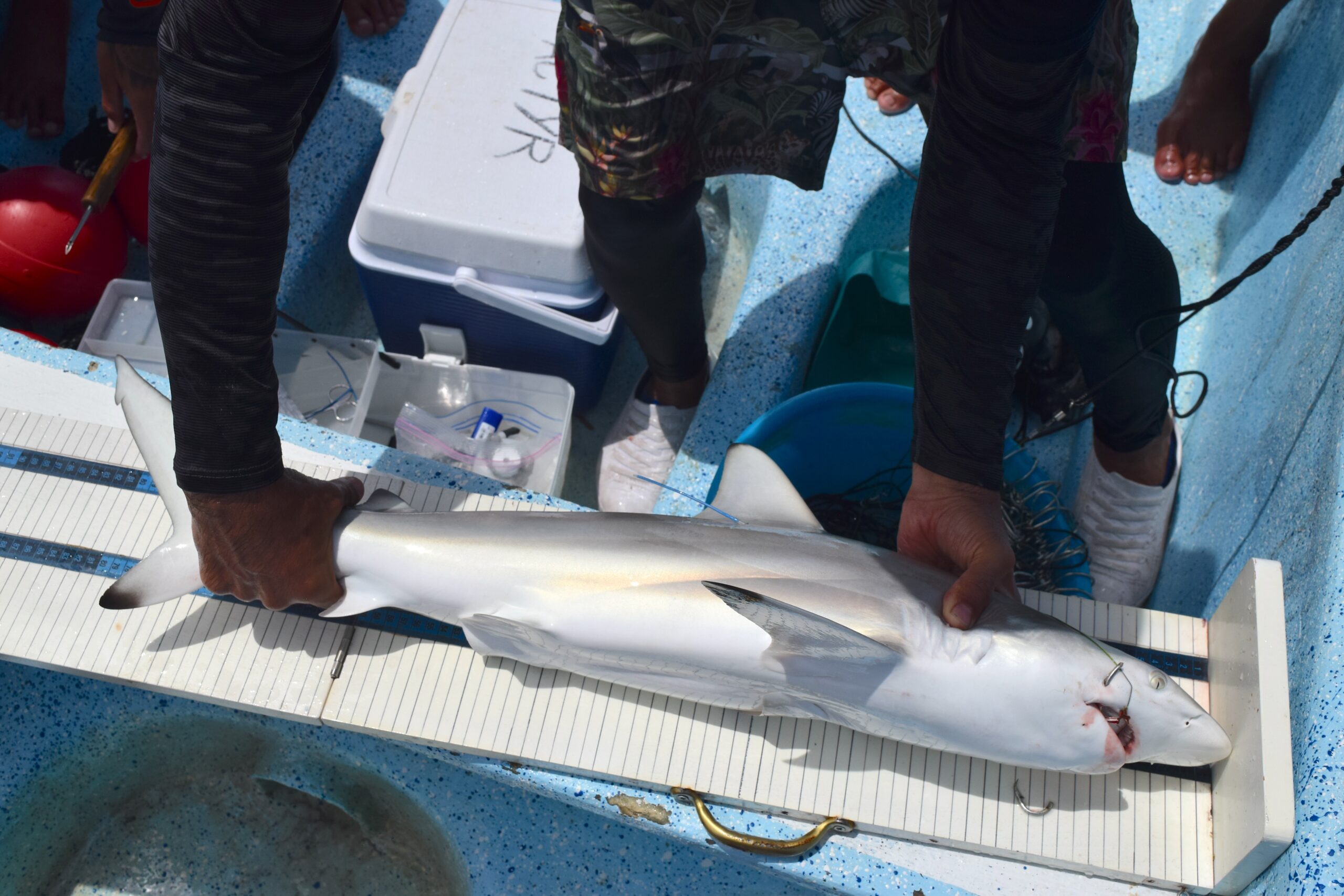
A juvenile blacktip shark already tagged. Photo © Mara Espinoza
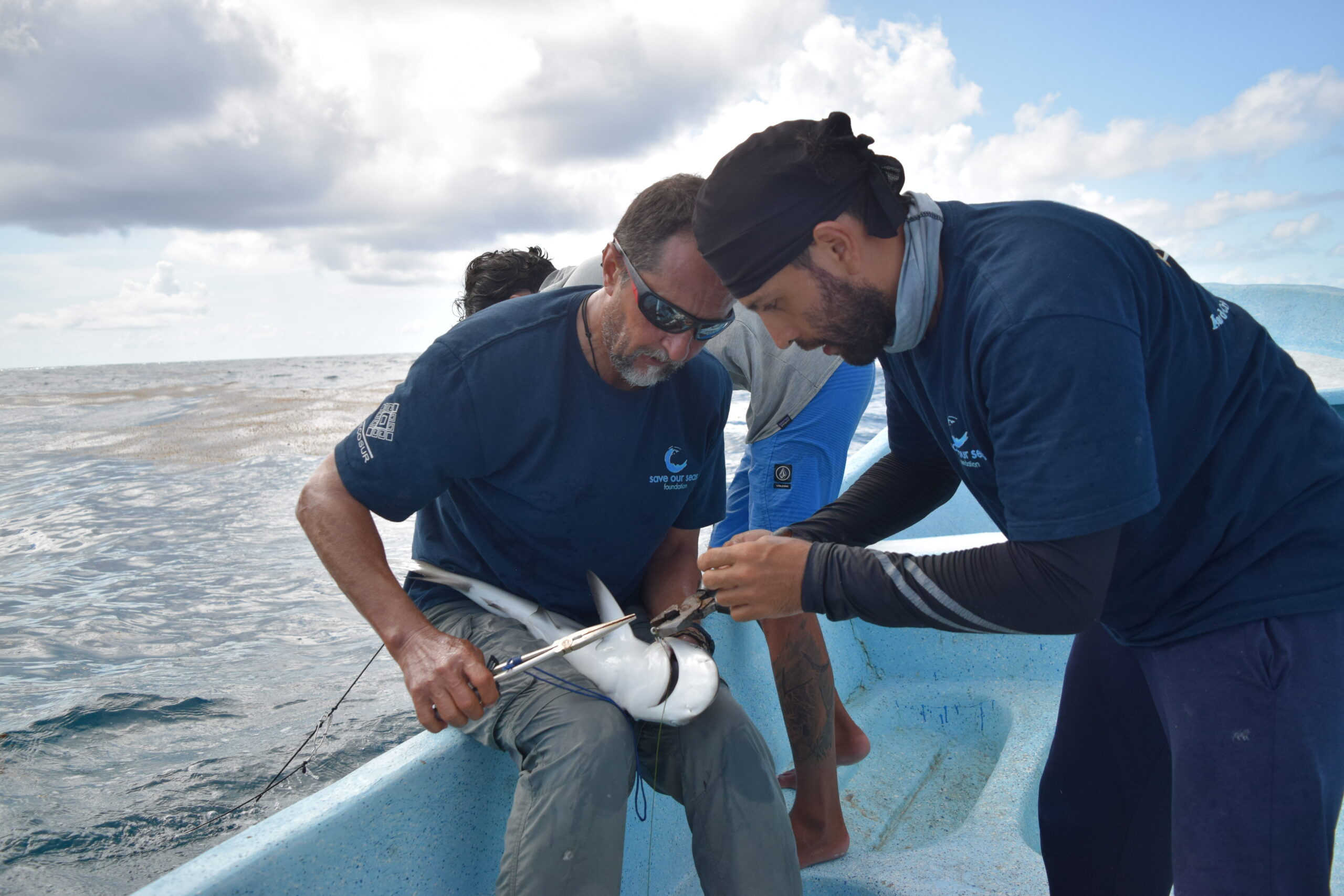
Andrés and I carefully remove the hooks from all caught organisms before releasing them alive; here a juvenile Caribbean reef shark (Carcharhinus perezi) is being taken care of. Photo © Mara Espinoza
Measuring the specimens, tagging them with spaghetti tags, taking tissue samples for genetic studies, and carefully removing the hooks was part of the most exciting and rewarding work we had to do during the surveys. At the end, Andres and Samuel had each a shark bite on their fingers to boast about (in reality they were not bitten, but they put their fingers to close to the mouth of the sharks while trying to remove the hook and the sharks cut them with their tiny razor-sharp teeth when they swinged their heads; a lesson learned for both of them!).
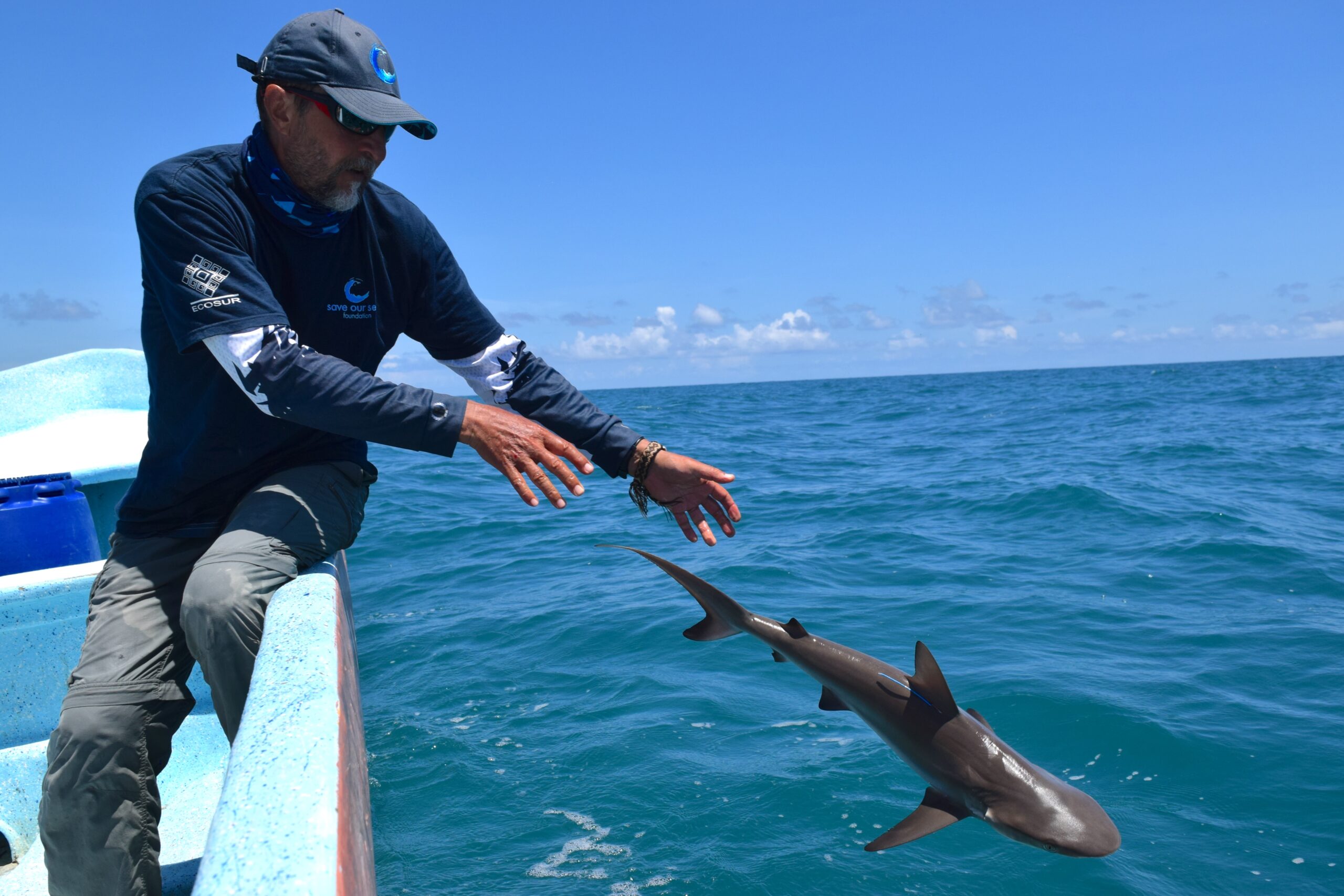
A juvenile Caribbean reef shark being released alive back to the sea by me. Photo © Mara Espinoza
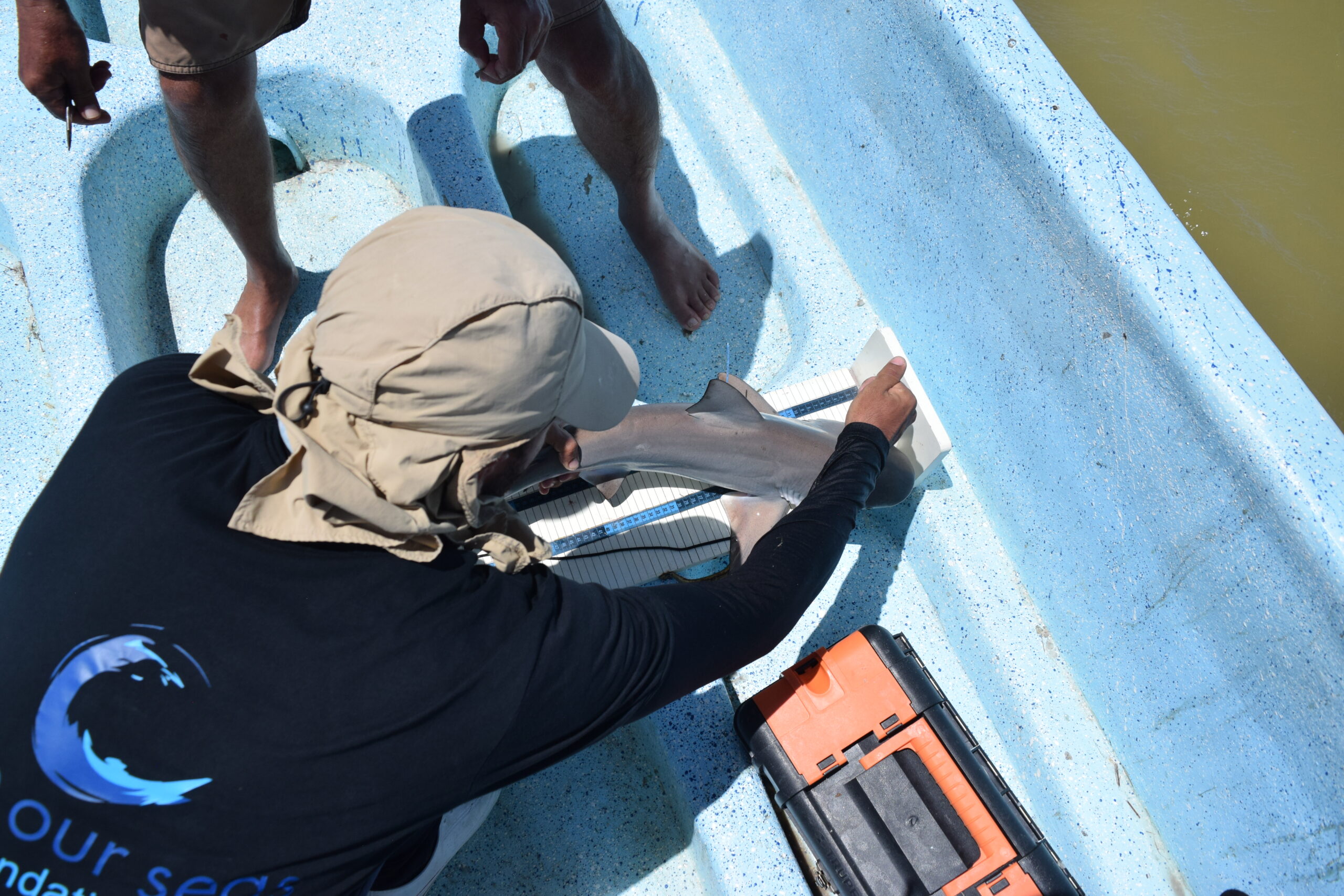
A young-of-the-year bull shark (Carcharhinus leucas) already tagged. Photo © Mara Espinoza
Our survey was a total success and it gave us a first glimpse of how healthy and relatively pristine Bahía de la Ascensión remains regarding shark and ray fauna. This is not just by chance: the bay is part of a 37 year-old Biosphere Reserve, one of the first to be declared in Mexico. Fishers have not used any kind of gillnets here since then. Although it is too early to say, it looks like Bahía de la Ascensión is a good candidate for an important elasmobranch nursery area, and likely also an Important Shark and Ray Area!
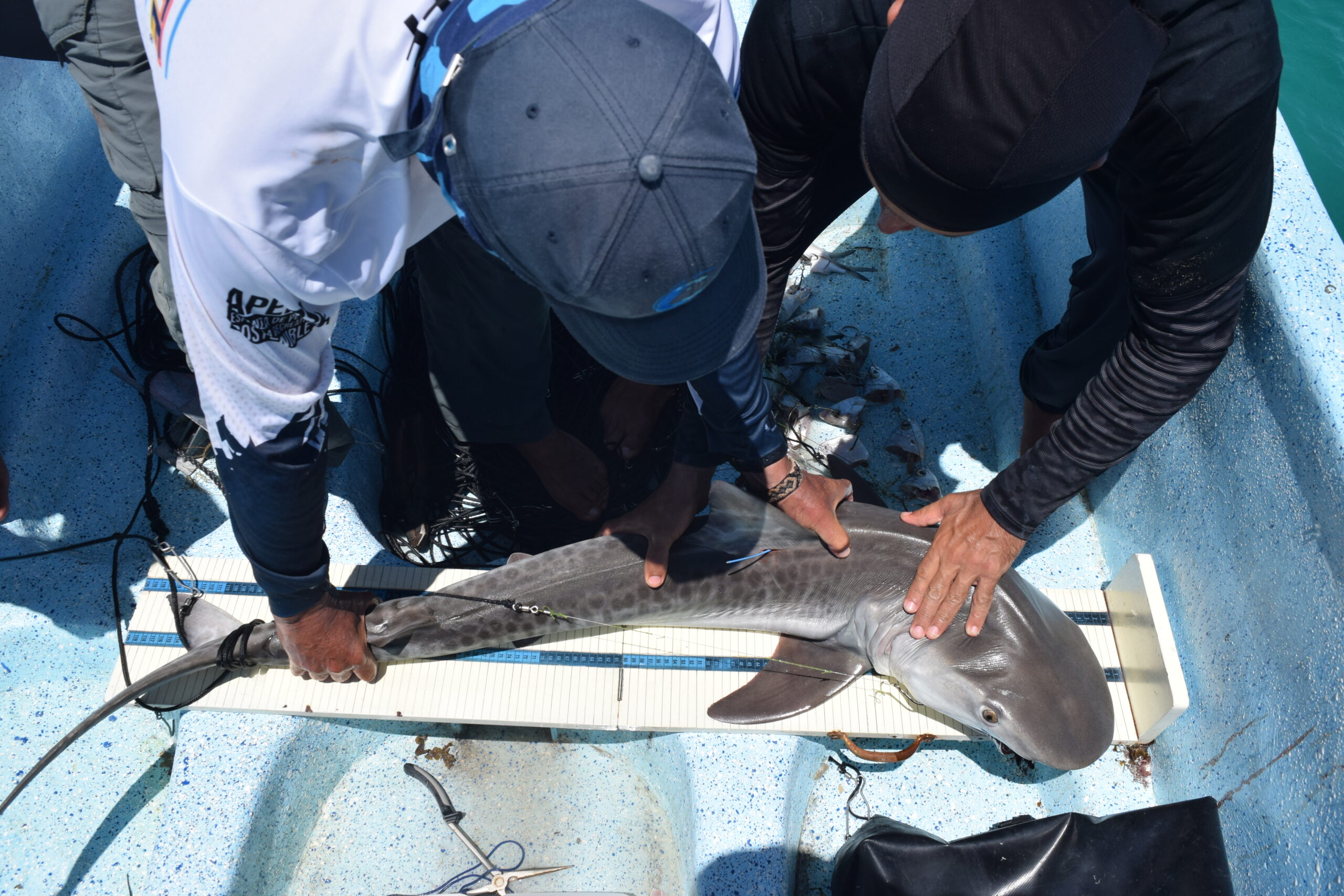
A juvenile tiger shark (Galeocerdo cuvier) was an unexpected catch in the mouth of the bay. Photo © Mara Espinoza
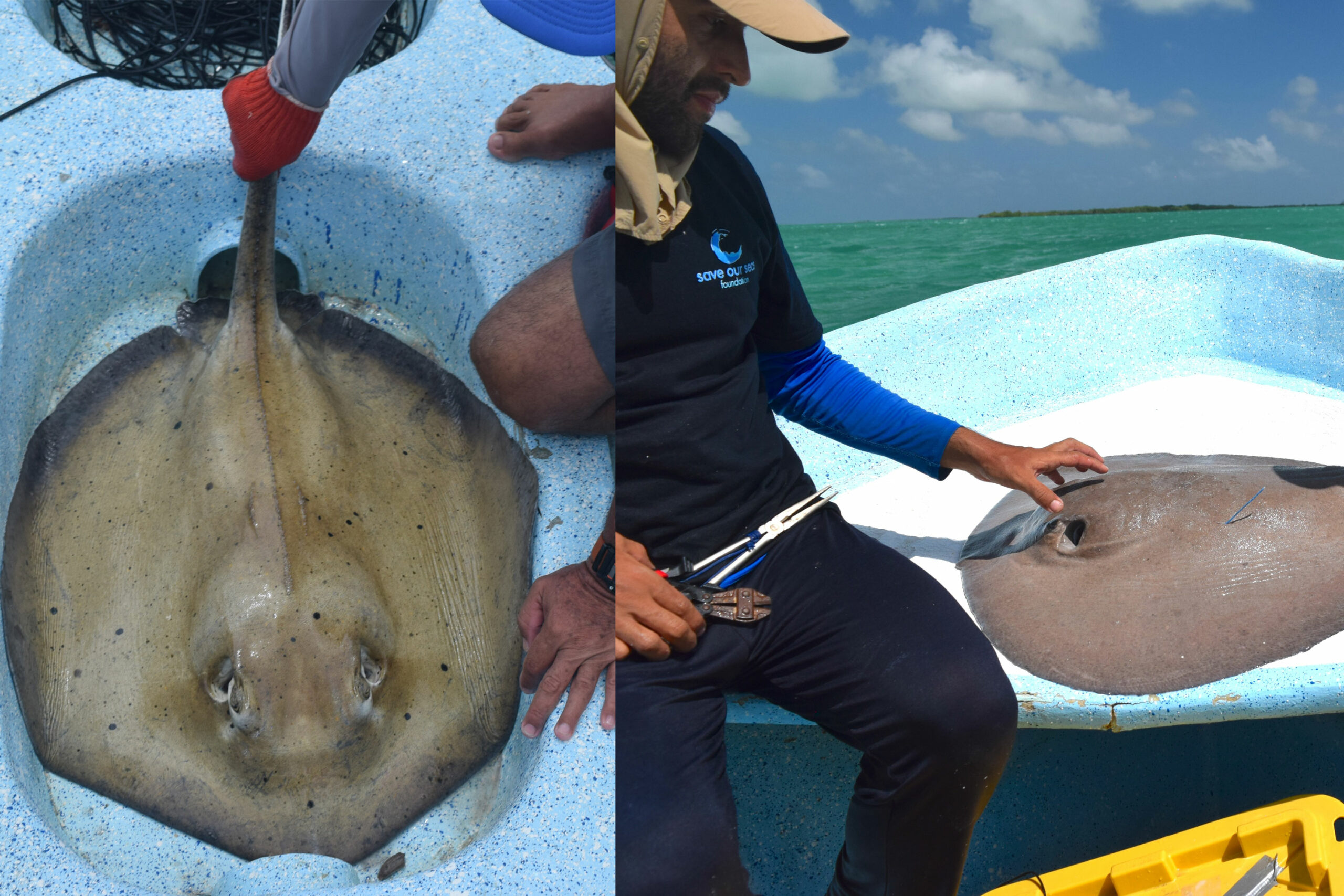
Rays were also caught in our longlines, although not as frequently as sharks. Here a southern stingray (Hypanus americanus; left panel), and an Atlantic chupare (Styracura schmardae; right panel) break the routine. Photos © Mara Espinoza
